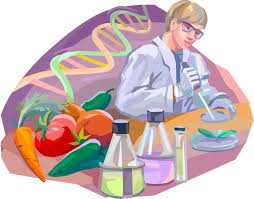More than 2 billion people are not getting the right amount of micronutrients. GMOs can help fight this battle
The importance of elements such as salts, vitamins and other cofactors is often underestimated. Poor people in developing countries are the most affected by micronutrient deficiency. Their diet is typically dominated by starchy staple foods, which are inexpensive sources of calories but contain low amounts of micronutrients. Researchers now explain how genetic engineering in plants can help address it.

Malnutrition: the importance of micronutrients
The lack of micronutrients leads to serious health problems. For example, the shortage of Vitamin A and zinc increase infant mortality. Little iron and folate contribute toanemia and problems with physical and cognitive development. But often those affected are unaware of these shortcomings. Experts believe it is important that all people have access to a healthy and balanced diet all year round. For this reason interventions are not only important cheap, but also scientific. One of them is the so-called biofortification. This consists of techniques of classic agriculture, able to give plants a higher micronutrient content. In this way, many fortified plants have been developed in the last 20 years. Examples are: potato sweet and corn with vitamin A, as well as wheat and rice with a higher zinc content. These crops have shown good nutritional and human health benefits.

GMOs: an aid to malnutrition
The biofortification it has some limitations. They are feasible where there is an abundance of water, resources and preparation by farmers. In an article published in Nature Communication, scientists demonstrate how to combine bio-fortified crops with techniques GMOs can help the effectiveness of both methods. The approaches transgenic they allow to reach much higher levels of micronutrients in crops than conventional methods alone, thus increasing their effectiveness. The authors show, for example, how GM crops manage to maintain higher levels of vitamins after harvest. Another benefit of genetic engineering is to combine and specifically increase multiple micronutrients. Therefore, by analyzing the shortcomings of individual territories and populations, plants could be engineered in a targeted and useful way.

GMO plants: other advantages and limitations
GMOs can also help combine increased micronutrients with traits that improve their productivity. Drought tolerance and pest resistance are becoming increasingly relevant with climate change. These targets are already being studied by current genetic engineering. By combining the various techniques, farmers could have crops that improve both nutrition and productive and stable yields. The authors acknowledge that genetic engineering is viewed with skepticism by a large portion of thepublic opinion. This is despite the fact that GMOs have proven to be safe both for human consumption and for the environment. One of the reasons why people are concerned is the fact that genetic engineering is often associated with large multinationals. A public investment campaign and humanitarian purpose, for the authors, could lessen these resistances. Professor Morning Qaim, co-author of the study, says:
With new techniques, farmers would not have to choose between crops that improve nutrition or those that allow for productive and stable harvests. They need both aspects combined, only then will they be able to adopt them widely
Follow us in our section sciences for other news!















